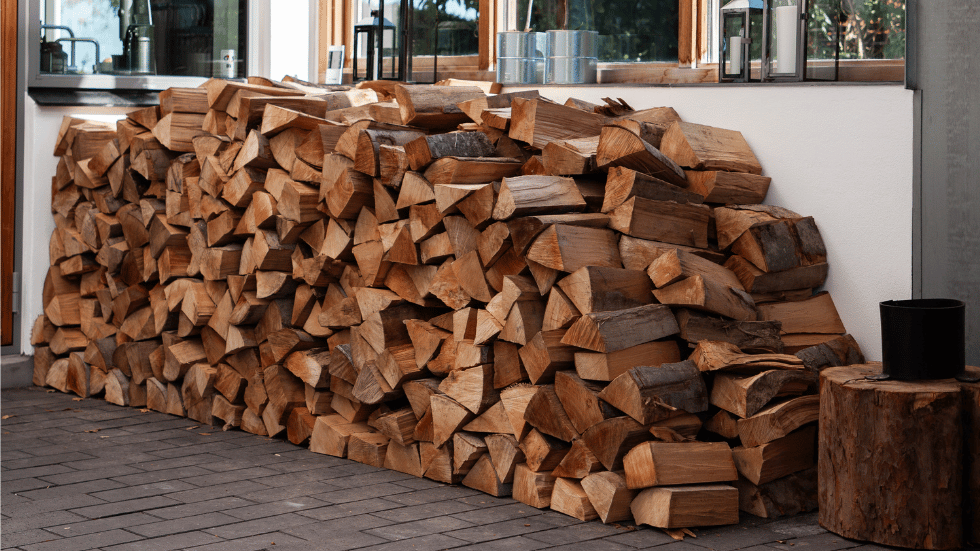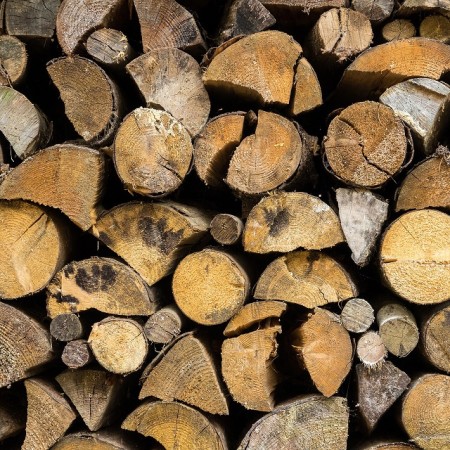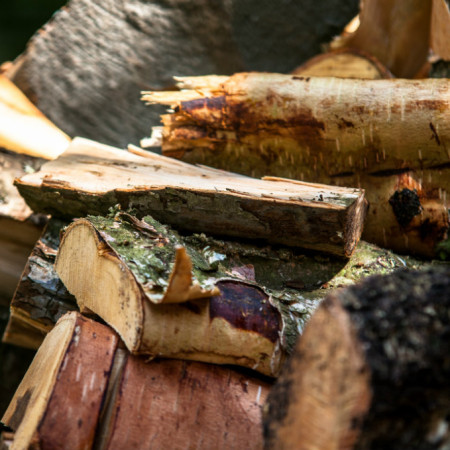Good advice on stacking wood
It’s crucial for the quality of the firewood that you stack and store it correctly. It’s all about giving the wood the right conditions for drying.
When the wood has been cut and chopped, there are two steps you should follow in order to make the most of it. The procedure is simple:
- In spring and summer the wood should be stacked and dried outdoors.
- In the fall, the wood should be moved to a shed or somewhere where it will be sheltered from rain and snow. If you don’t have a shed, you can easily shelter your woodpile by using sheet metal or a tarpaulin.
How to shelter your woodpile
The woodpile must be sheltered from moisture – both rain and moisture from dirt and plants. Shelter your woodpile from below by keeping the ground free of grass, plants and weeds. These can make the wood moist. Use joists or laths as a foundation underneath the woodpile or stack your wood on pallets to avoid that the wood absorbs moisture from the ground.
If you want to shelter the wood from rain, you can place sheet metal on top of your woodpile. They are good to use because the sun heats them – this way they give off heat to the firewood.
Alternately, you can use plastic or a tarpaulin to cover the top of the woodpile. Remember that you can’t cover it entirely – if you do mould and fungus will grow on the wood.
Where should you place the woodpile?
It’s all about stacking your wood so it’ll dry the quickest. This is necessary to avoid fungus.
Sun and wind are the most important factors in the drying process. It is recommended that you stack your wood so that the biggest surfaces on the logs are exposed to as much sun and wind as possible. It is a good thing if the wind has access to the woodpile from every side.
Wet firewood should be stacked as loosely as it’s possible without the woodpile collapsing in order for the wind to be able to blow through the logs in the pile.
Basements and rooms inside are not suitable for drying wood. You’ll risk that the moisture from the wood will cause mould fungus and create a bad indoor climate in your house. Firewood can only be taken inside in a firewood basket once it is dry and has a moisture content below 18 %.
Aesthetic and beautiful woodpile
The most important thing is to create the best conditions for the wood to dry, but for many firewood enthusiasts the look of the woodpile means a lot too. There are many beautiful examples of both creative and different ways to stack wood. If you stack it up against a wall, you’ll get a steady result – but it limits the possibilities of variation.
A row of firewood – for optimal drying of firewood
A row of firewood is the classical method for stacking wood. It is both nice to look at and it provides good drying conditions for the firewood.
Round woodpile – aesthetic storage of firewood

A round woodpile or a “beehive pile” as it is also called has many advantages.
- Aesthetic storage of wood
- Good utilisation of space
- Room for gnarled logs in the middle
- A good round woodpile will let rainwater run along the outside of the pile – this way a cover for the top isn’t needed.
But a woodpile is difficult to make. If it begins to collapse – everything will collapse.
Build a round woodpile – step-by-step guide:
- Lay a horizontal and circular base.
- Build the pile carefully into a steady cylinder.
- Continuously fill up the middle space with (the gnarled) logs, since these will provide good support for the pile.
- When the pile is about 1 metre tall, you should start placing the logs closer to the middle for each layer.
- Finish, if convenient, with a layer of logs whose bark face upwards.




